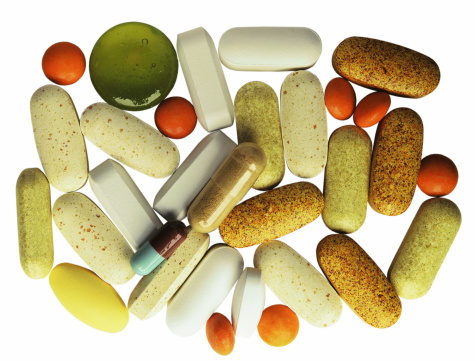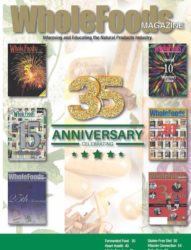![]()
Gone are the days when supplements came in just pill form. Modern science has created for consumers several options for taking supplements, but the question remains: which way is best?
Bioavailability
The most important aspect of a supplement delivery method is how well and quickly it works, even though the experience (taste and convenience) is a close second. The term “bioavailability” is just a big word for absorption rate. The U.S. Food and Drug Administration defines bioavailability as, “The rate and extent to which the active ingredient or active moiety is absorbed from a drug product and becomes available at the site of action” (1).
Nutrients that are bioavailable must be easily broken down by the digestive system, which is done through the disintegration of binders, fillers and active ingredients. The various supplement delivery forms—capsules, tablets, liquids, melt-aways, powders, gummies or smoothies—all have different advantages, including for bioavailability.
Picking Your Pill (or Non-Pill)
The tablet and the capsule are two solid dosage forms, but are very different in both makeup and bioavailability. Most tablets contain active ingredients plus an inactive filler substance, though some contain much more than others. Manufacturers can also include ingredients that bind the tablet together as well as ones that help with disintegration. Tablets are cost effective, giving shoppers the most bang for their buck; the negatives lie in the problem with slower digestion and swallowing, which may be hard for children and the elderly (2). This varies by product, though.
The capsule offers other advantages. Some nutrients aren’t as effective compacted in a single solid tablet (like probiotics). Instead, the active ingredient is put inside a shell, which can either be hard or soft. The coating helps the medication go down smoother, and allows the active ingredient to be mixed with oils or other liquids, which also benefits absorption. The hard capsules consist of two shells put together and are more suitable for nutrients in powder form. Some specialized coated capsules can also protect nutrients from gastric acid, when the intent is for them to reach the intestines. Soft gel capsules are a single piece and are used for oils, such as fish and flaxseed oils. The positives lie in their coating, which helps with swallowing them (3).
If consumers are scared of giant pills or have difficulty with smaller ones, another option is sublinguals, also known as “melt-aways.” These are a great alternate for people who would rather not swallow pills, which includes 38% of Americans according to some studies. Sublinguals are no bigger than a dime, and are placed underneath the tongue for fast absorption into the bloodstream (4).
Straying away from solids, many manufacturers offer supplements in liquid form as well. For vitamins and minerals to work properly, they must first be absorbed by blood cells from the bloodstream after going through the digestive tract. The advantage of liquid supplements lies in the lack of fillers and binders that are found in solid form (though they may contain flavoring agents), plus their fast and effective absorption (5).
Gummies and other chewables are certainly one of the most fun ways to take supplements by bringing out your child. These supplements often come in various colors and flavors, which help improve compliance in both kids and adults. Although tasty, innovative flavors are an advantage to many shoppers, some gummies have a high gelatin content, deliver less nutrients and tend to cost more than tablets.
One of the newest additions to the supplement delivery world is a smoothie-like form. The trick in these little treats is emulsification, which is the mixture of two or more liquids that are normally un-blendable. Oils from flaxseed, fish and coconut are blended with natural fruit flavors to create a creamy, smoothie-like texture. Emulsifying these oils not only offers the taste and texture benefit, but also helps omega-3s absorb better in the body (6).
On the Go
Convenience is a major aspect of all delivery forms. People may have trouble traveling with liquids because of the strict rules surrounding liquids in luggage, and may prefer a solid or powdered form. The powder supplements also allow for on-the-go nutrients for people who want to avoid swallowing pills, no matter how petite they may be. Powdered supplements also dissolve in many different liquids, such as water or juice, so you can enjoy a tasty, non-chalky solution. In the end, no matter which delivery method you choose, make sure you pick a good-quality product from your local supplement store. WF
References
1. FDA, “Guidance for Industry,” www.fda.gov/downloads/Drugs/GuidanceComplianceRegulatoryInformation/Guidances/ucm070124.pdf, accessed May 23, 2012.
2. “What is a Tablet?” www.swallowingdifficulties.com/prescriber-information/prescribing-different-formulations/what-is-a-tablet, accessed May 23, 2012.
3. “What is a Capsule?” www.swallowingdifficulties.com/prescriber-information/prescribing-different-formulations/what-is-a-capsule, accessed May 23, 2012.
4. Superior Source, “Why MicroLingual Technology?” www.superiorsource1.com/whymicrolingual.html, accessed May 23, 2012.
5. Buried Treasure Liquid Nutrients, “The Liquid Advantage,” www.lifelinefoods.com/liquid.htm, accessed May 23, 2012.
6. Barlean’s Organic Oils, “FAQs,” www.barleans.com/faqs.asp#swirls, accessed May 23, 2012.]
Published in WholeFoods Magazine, July 2012










